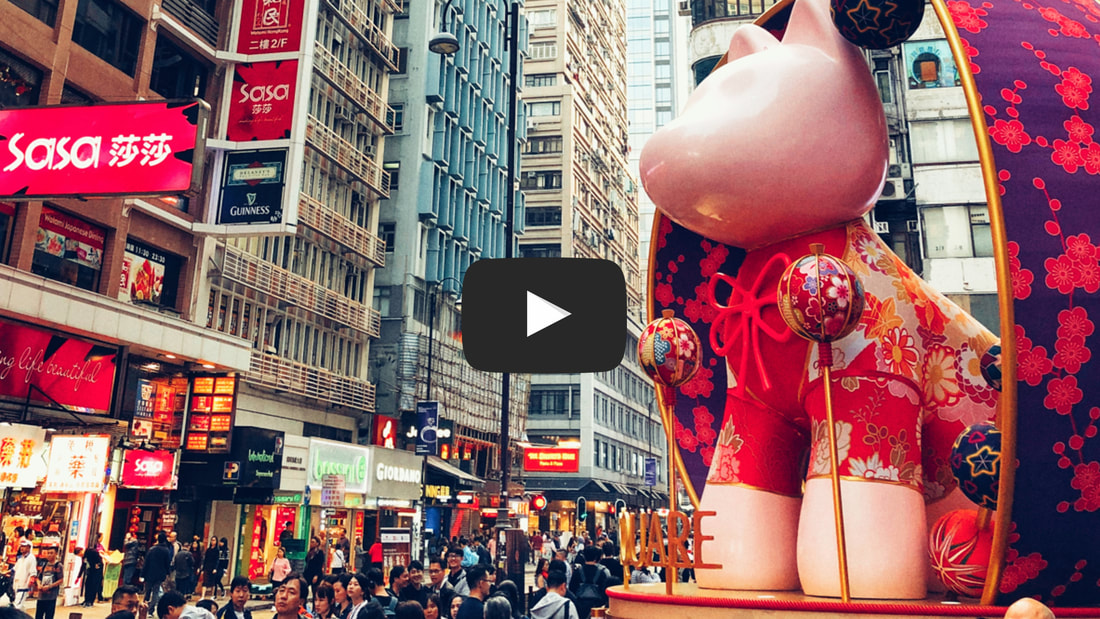|
Have you ever wondered what are the major parts of the electrical system for an electric sailboat? In this video, we give you a high level view of that in regards to our boat. It will cover:
1) lithium battery configurations 2) power distribution networks on the boat 3) electric generation and autonomy We also touch briefly on modeling your energy use when building an electric boat. Also, if you are interested in what we used, we use components from the following vendors: Oceanvolt, Victron, B&G, ETA Powerplex, Fischer Panda, Solbian, and Lithiom Werks. We are not sponsored by any of them, but we wanted to share what we decided to purchase. There's also a little yellow and black puzzle in the video. Does anyone know how to solve it? See if I was able to do it in the outtake. If you like our videos, let us know by subscribing here: https://www.youtube.com/user/vu360 Real-time photos on Instagram of our trip from where we are currently: vu: https://www.instagram.com/vu360/ Isabella: https://www.instagram.com/chillabella/
0 Comments
We started our journey to build a fast electric sailboat nearly 5 years ago. It took more than 3 years to complete and now we've sailed it for more than a year. It's finally a dream come true.
Want to find out a little more about? Watch the video and subscribe. If you like our videos, let us know by subscribing here: https://www.youtube.com/user/vu360 Real-time photos on Instagram of our trip from where we are currently: vu: https://www.instagram.com/vu360/ Isabella: https://www.instagram.com/chillabella/ What does it mean to come join the adventure and the Saga?
Beyond adventure and fun, what motivates you? For us it’s about connecting with people and exploring and understanding our world. We would like to showcase all the unique lives, stories, and places we explore on the Blue Saga (Saga for short). Travel has opened up our perspective and we would love to share that. We live in an amazing world! On our journey, we would love to have a positive impact with local communities by helping to cultivate local enterprises and building a global environment that gets better with each generation. Who is right to join the Saga? Like in any adventure, you have to want to explore, discover, and experience new things! To join the journey on the Saga, you have to be adventurous at the same time be responsible and helping and adding to ongoing “unscripted” (unpredictable, unexpected) journey. There’s as much adversity as there are extraordinary moments. It’s a lot of hard work to create and go on an amazing journey and adventure. We are always up for it and look for people who love the same. Of course, we will be all living in close quarters on a boat and so we need to all get along. Not every day will be amazing. So, positivity, empathy, and communication are important. What if you want to add your story to the Saga? How do I join the crew? From time to time, we will invite people to come join us. We will normally invite people we know and would be a good addition to the Saga family, but our motivation is to connect with people. So, we would love to meet people along the way or those who want to join the Saga family for a longer journey. If you feel a connection to our story and the journey, feel free to contact us at [email protected]. If you want to join, let us know a little about yourself and why you think you would be a good addition to the Saga. A video would be great. In general, we are looking for those who have experience and love sailing and are creative storytellers through writing, photos, or videos. The only hard requirement is that you have a passport (and no criminal record) that allows you to travel to all the locations we are going to. If you get an invite, we will have a meet, greet, and sail for a short period. If everyone is happy, then we can all go on a journey together. No matter what, we are excited to meet you! How do we follow and know where the Saga is going? If you are on this site that's a good start, but we are on social media as well. We will post our rough time table and inspirational locations on this site and our social media is often the best place to see where we are at. Follow us on:
What happens if the Saga can't meet up with us for some reason? Due to weather and country formalities (laws), it's always tricky to be certain that the Saga will be at a location on a particular day for anyone to join. Of course, with enough advance notice, things are much easier to manage. However, always have a plan B. What would you do, if you can't sail on the Saga? In general, the options are 1) to travel to meet us where the boat is, 2) wait until we can arrive, or 3) meeting up isn't possible, execute your plan B and have a lovely holiday. What is the cost and expectation on board? As part of the Saga family you will have a bed and travel covered when on the Saga. Our goal is to use a little fuel as possible in the journey. So that cost should be low, but everyone will be expected to contribute to a kitty to fund for common expense such as food, travel fees, mooring, etc. Cost of individual expenses, such as personal things and per person fees are the responsibility of the individual. Everyone is expected to contribute to daily chores and there will be responsibilities everyday from preparing to sail, maintenance on equipment to cleaning to cooking. How should I pack to joining the Saga? Bag First you should have one “soft” bag that can be folded up and stored away (no hardcases). There’s limited space on a boat. So, it’s either you are comfortable or your bag is comfortable. Don’t let your luggage take over your bed. Also, less is more on a boat. Footwear On the boat we generally don’t wear shoes, especially indoors as the floors are very soft and light. They can easily be damaged. Think about two pairs of lightweight shoes. We recommend one shoe that can be used to walk in the water and go hiking in and second that you want wear to walk around and go out in. What we recommend is have a pair of sandals that can be used for the boat, water, and hiking and second pair of running/training shoes that you can be active in and still use to wear out at nights. Yup, everything on a boat has multiple uses. You should never wear heels on the boat. Packing for Weather For jackets we always recommend layers to manage the weather and it depends on what time of year you are visiting. Simply, I would bring a lightweight no lining rain jacket. Depending on time of year, you can bring an insulation layer like a fleece jacket or down jacket. If you are coming in the heart of summer, bring only the rain jacket shell. You will be exposed to a lot of sun. We always recommend some kind of sun hat/visor, especially for those time on the beach. If you don’t have a good pair of sunglasses, this is might be a great excuse to buy a new one. Make sure it has good UV protection and polarization is a nice feature to have to see the sea life. Let’s not forget protecting your skin is super important. We generally recommend good 30-50 SPF waterproof sunscreen. Don’t worry, you will get plenty of sun, if you are looking for a tan, you will get it. Everything Else Remember you should bring the smallest and lightest things you need. Some other things to consider:
We will have most everything else and glad to share, such things like hairdryer, first aid kits, towels for showers on board, etc. If you have any questions what to bring, just reach out. We seem to return to Vietnam every decade and it’s always great to see the amazing changes. This time we visit Ho Chi Minh City (Saigon) with some friends from Hong Kong.
Come join us as we find some of the best places for eat authentic Vietnamese food and show you around HCMC. If you like our videos, let us know by subscribing here: https://www.youtube.com/user/vu360 Real-time photos on Instagram of our trip from where we are currently: vu: https://www.instagram.com/vu360/ Isabella: https://www.instagram.com/chillabella/ From Thailand, we stopped in Siem Reap (Cambodia) for a few days to see a place we've always wanted to visit, Angkor Wat. We really didn't know much before we landed. So everything was a surprise and marvel, which is why we travel. It was great to learn about the Khmer culture and history and seeing the sites, which is much more than Angkor Wat.
There's a lot of options to see the sites when you visit Siem Reap and we wanted to give folks a sense of what that is like. Enjoy the video! Tips:
If you like our videos, give us a shout out by subscribing here: https://www.youtube.com/user/vu360 Real-time photos on Instagram of our trip from where we are currently: vu: https://www.instagram.com/vu360/ Isabella: https://www.instagram.com/chillabella/ -Vu Our time in Thailand was filled with some major highs and some of the lowest moments of our journey.
We’ve been to Thailand before and this is the 3rd time for me, but this would be the longest either one of us would have spent in Thailand. Our plan was to travel from north to south and use 3 places as a home base so we weren’t constantly traveling. When you are nomads it’s nice to have some extended period of stability. That was the plan. With any thoughtful plan, expect to adjust as life throws you a curveball. As we landed in Chang Mai I felt really ill with extreme fatigue and weakness that I’ve never felt before. I thought maybe after months of not working out, lots of fatty foods, and irregular sleep had caught up to me in some way. I was sure some rest in Chang Mai would cure it, but as I rest more, the worst it got. After visiting an elephant sanctuary were I felt my chest pounding and my body giving out on me, I needed to figure out what was wrong. Nothing like this has ever happened to me. Isabella and I were both really worried. Was I having some form of a heart attack? Every bad thought race through my mind, especially since we were not sure how to deal with the situation in a foreign country. We both kept an active monitor of my condition and noting any changes. We didn't want to be surprised, especially since we didn’t know how to reach emergency services or communicate with the local people. We had to figure out how to visit a doctor, maybe a specialist, along with a bunch of other things as well. We had plans to travel around northern Thailand that we had to limit. Our apartment stay was coming to an end and we needed to figure out how to extend without moving while I was in this state. We wanted to see a doctor before we move on to potentially more difficult regions for healthcare (or determine if we need to head back to the States). And I was also worried about going to a hospital in southeast Asia as my experience when I was backpacking through Vietnam many years before was not good. Where do you even start to find an English speaking doctor and specialist in Thailand? We were surprised. Many Thai hospital sites were in English and you can make an appointment from the site, including picking a specialist. There were expat sites that gave feedback on doctors. It seems like many doctors spoke English. But how much will everything cost? We have international health insurance, but it was essentially catastrophic coverage with high deductible. And I wanted to do a comprehensive cardio check-up, which in the US would cost thousands of dollars. When we got to the hospital a cardio nurse checked me in, went over cost for different service upfront, and discussed what she thought would be best, which we could adjust based on the doctor's consultation. I was shocked. The price for a full suite of tests, including some very expensive ones, came out to be about the price of a fancy meal on an evening out. It was affordable. What was even more extraordinary was the experience. There was always a nurse or a guide to help you around the hospital so you don’t get lost when doing the tests. The facility was modern and quite nice. They were in constant contact with me on ETA for different things and was apologetic when the doctor was only 5 minutes late. The doctor was friendly, candid, and world-class. I am sure not everyone's experience is like this, but it was pretty perfect. The diagnosis was a little embarrassing. My cardiovascular system was extraordinary healthy. I knew that this could be a potential outcome. If that was the case, then what I was feeling was likely a consequence of my flu I had a month before. The doctor also confirmed that it is common people have these type of symptoms after a severe flu. So after being cleared physically and it allowed me to start being active again, pushing through the extreme fatigue whenever I felt it. After a short period of working out and being active, I quickly recovered. Knowing is half the battle. After recovering and adjusting to the remaining time, we traveled to Phuket and Bangkok. We explored different islands, learned freediving, visited many temples, and ate a lot of amazing food (check out our video blog here). Thailand is not only a beautiful place to visit (checkout pictures above), but it has great modern infrastructure. I guess that’s why there are so many expats living there. -Vu P.S. This is why we are so behind in our videos and blogging last month and of course Isabella caught a cold just a week back. So we continue to be behind. Life of a nomad isn’t always just amazing sunsets and beautiful places. 😉 We left Thailand on the very last day of our visa. Thailand is such a unique place and we wanted to stay there as long as we could (without getting an extension). In those 30 days, we had an opportunity to travel Thailand from North to South, seeing the many sites, enjoying beautiful beaches, meeting great people, and tasting a variety of amazing food. And the food is oh so good!
So we decided to put together our top 5 comfort food that we found ourselves constantly going back to. What do you think they are? What are your favorites? If you like our videos, let us know by subscribing here: https://www.youtube.com/user/vu360 Real-time photos on Instagram of our trip from where we are currently: vu: https://www.instagram.com/vu360/ Isabella: https://www.instagram.com/chillabella/ -Vu After leaving Japan, we decided to stop by Hong Kong to visit friends and enjoy Chinese New Year.
It was a little bit of a whirlwind week with jammed packed activities everyday. We tried to capture almost everyday in the video blog, except for the 3rd day of new years which we spent mostly at our friends' homes. Hopefully it gives you a sense of what it's like leading up to the new year and what it's like afterwards. Chinese (Lunar) New Year celebration doesn't end at the countdown, but rather it signifies when the celebration starts. If you like our videos, let us know by subscribing here: https://www.youtube.com/user/vu360 Real-time photos on Instagram of our trip from where we are currently: vu: https://www.instagram.com/vu360/ Isabella: https://www.instagram.com/chillabella/ -Vu We spent over a month in Japan. It gave us time to explore the dessert scene there. If you like desserts, there really is no place better than Japan. It blends the best desserts from all over the world!
For this episode we focused on our favorite desserts while we were in Japan, the desserts we find ourselves craving and has that 驚かす(adorokashi) factor. Don't know what that means? Check out the video. Let us know what you think and what your favorite 5 Japanese desserts are? If you like our videos, let us know by subscribing here: https://www.youtube.com/user/vu360 Real-time photos on Instagram of our trip from where we are currently: vu: https://www.instagram.com/vu360/ Isabella: https://www.instagram.com/chillabella/ -Vu Even if you are familiar with Japanese culture, it might be a shock the first time you visit Japan (photos above are from all over Japan) and Tokyo. Even the second time around it was still true. I’ve been to Japan and Tokyo many years ago and this time living here for a month gave me a new appreciation for the Tokyo life, which I didn’t get from a shorter visit.
Japan is known for being a discipline and respectful society. Although you do feel that presence, it is definitely an incomplete view of this multifaceted country. Today Japan is a vibrant country, evolving with the times and yet still holding on and celebrating its heritage. Although, it doesn’t fear embracing food and culture from around the world. A matter of fact, in each case it brings a very distinctive Japanese twist. Some may argue even better than the original it appropriated from. We don’t disagree. It’s an expressive society stemming from a culture that values not trying to standout. So, it creates this awkward and amazing individual expression. Sometimes it is seen as playful cosplay, but often it’s a bold statement that is more subtle in fashion, hair style, or make-up. Although you can argue Japan is a conservative culture, there is much more than a fringe that is pushing and transforming the country that is impacting every aspect of life. There’s no place to see that transformation better than Tokyo. So, what are some things you need to know to visit or live in Tokyo? We covered some of this in our Tokyo video blog and we have some additional complimentary details below.
That's it for our tips. If you have any questions, feel free to comment below. I swear we fall in love with each place we visit. I know both Isabella and I didn’t want to leave Japan and Tokyo. We love Tokyo! -Vu Grocery Beer Price Index: Grand Kirin 330ml 228 yen ($2.11) |
AuthorVu + Bella Categories
All
Archives
March 2021
|





 RSS Feed
RSS Feed